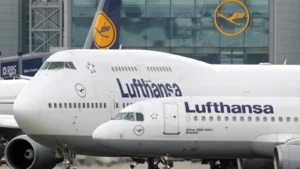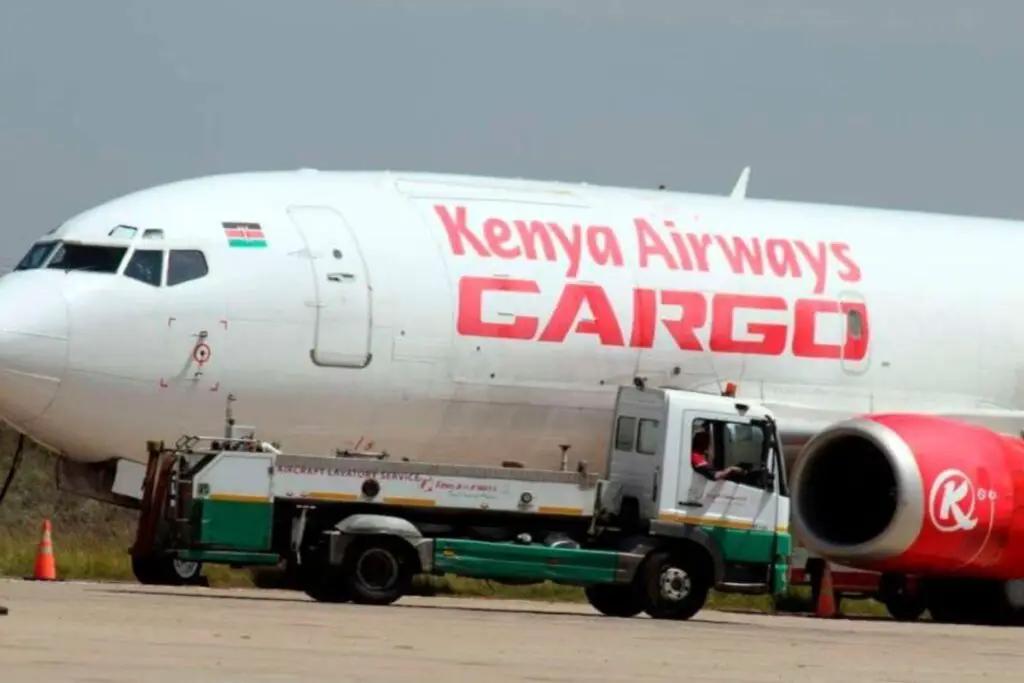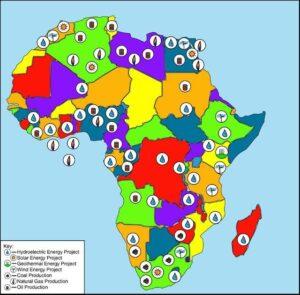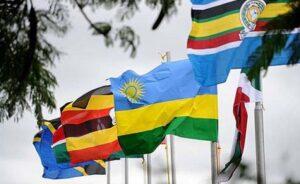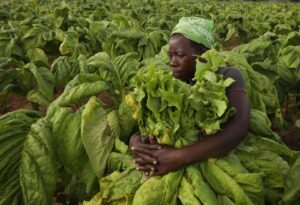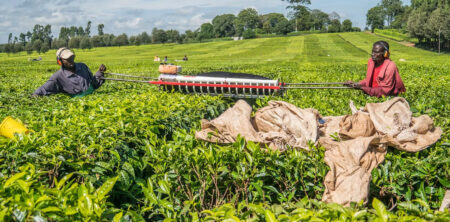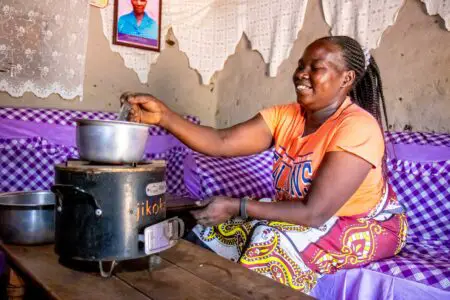- Agribusiness could drive Africa’s economic prosperity
- Dawood Al Shezawi: Why AIM Congress 2024 is the epicenter of global economic and cultural dialogues
- d.light’s 600,000 cookstoves project verified as top source of quality carbon credits
- Artificial intelligence (AI) could create a turning point for financial inclusion in Africa
- AIM Congress 2024: Catalysing global investments with awards
- Kenya’s economic resurgence in 2024
- The most stressful cities to live in 2024 exposed
- Tech ventures can now apply for the Africa Tech Summit London Investment Showcase
East Africa
- The Uganda National Oil Company (UNOC) is directly importing petroleum products from Vitol Bahrain, aiming to reduce reliance on Kenyan firms and mitigate high fuel prices.
- UNOC’s direct importation and sale of fuel to OMCs in Tanzania and Uganda is a significant step towards fostering stronger regional ties, promoting economic growth, and ensuring energy security.
Uganda National Oil Company (UNOC) has started the sale of petroleum products to oil marketing companies in both Uganda and Tanzania.
This is part of a broader strategy to test the waters before UNOC embarks on a direct importation agreement with the global oil titan, Vitol Bahrain. This maneuver signals a new era in East Africa’s energy dynamics, especially following a cooling of relations between Uganda and Kenya over fuel supply mechanisms.
Breaking New Ground: Uganda National Oil Company Direct Importation Deal
For years, Uganda’s fuel supply chain was heavily dependent on Kenyan OMCs. However, …
- Effective March 1 2023, Lufthansa Group appointed Kevin Markette as the new General Manager for the East African region.
- This encompasses Kenya, Ethiopia, Uganda, Rwanda, Burundi and Tanzania.
- Effective June 3, 2023, Lufthansa will expand its current connection from Frankfurt, Germany into Nairobi for the summer flight schedule from five to seven weekly flights.
The Lufthansa Group has re-affirmed its commitment to East Africa by relocating the commercial responsibility for the passenger business back to Kenya.
Effective March 1 2023, Lufthansa Group appointed Kevin Markette as the new General Manager for the East African region.
This encompasses Kenya, Ethiopia, Uganda, Rwanda, Burundi and Tanzania.
With his position and team permanently based in Nairobi, he will be able to better focus on the needs of regional customers and through a physical presence in the region be closer to the market.
Markette succeeds Dr. André Schulz, who has been appointed Head of …
- Insurance industry paid claims worth $400Mn in three months from October 2022 to December 2022 representing a 3percent increase compared to the third Quarter of 2022 that paid claims worth $391Mn.
- Latest statistics from the Insurance Regulatory Authority (IRA) indicate that the number of claims reported to the insurers were 2,040,600, a 12.6 percent increase compared to 1,811,141 claims reported in Q3,2022.
- General liability claims paid went up by 16.8 percent to 14,085 claims worth $42Mn from 12,055 claims paid worth $40Mn billion in the previous quarter. Non – Liability claims paid hit 1,714,723 claims worth $170Mn representing a 1.8 percent from 1,684,698 claims worth $160.31Mn reported in Q3 2022.
Insurance industry paid claims worth $400Mn in three months from October 2022 to December 2022 representing a 3 percent increase compared to the third Quarter of 2022 that paid claims worth $391Mn.
According to the Quarter 4 of 2022 claims …
More than 66 per cent of total employment is Sub-Saharan Africa is from the informal sector, the International Labour Organization (ILO) has revealed, the biggest provider of employment in Africa.
Informal economies are typically characterised by low productivity and non-exportable goods and services.
READ ALSO:Sectors that will grow West Africa’s 15 economies
On the other hand, the sector also provides crucial livelihoods to the most vulnerable of the urban poor.
It is projected that the informal sector is likely to absorb many of the continent’s young employment seekers who are mainly today’s millennial digital natives – educated, learned and very adaptive to global trends.
READ ALSO:Industry Review: Jua Kali sector in East Africa
The Inter Region Economic Network (IREN) recently has held its 18th Africa Resource Bank Forum in Nairobi in collaboration with the Friedrich Naumann Foundation for Freedom(FNF), under the theme: “The Future of Africa’s Informal …
Five East Africa Community member countries have together amassed more than $100 billion in foreign and domestic debt, stretching their repayment budgets to the limit.
The rapid loans build-up has pushed East African countries close to a debt crisis, putting the region’s long-term economic stability at risk.
Kenya and Burundi have the highest loan distress profiles compared to other EAC countries with their debt -GDP ratios projected to exceed 60 per cent this year.
The International Monetary Fund (IMF) considers a 50 per cent debt to GDP ratio to be within the tolerable limit for developing economies such as the EAC members.
In its latest Regional Economic Outlook report, IMF warned that some EAC countries are already facing increased foreign exchange and refinancing risks which he advised that it is important to enhance a debt management frameworks and transparency.
Kenya’s debt-to-GDP ratio is on its way to hit 61.6 per …
Debt across East Africa continues to grow with Kenya’s risk of debts increasing from low to moderate.
Burundi has also joined a group of nine African countries with a high risk of debt distress. According to a US-based research firm, Brookings Institution, Kenya, Uganda and Tanzania rank among the top 50 countries in the world that are highly indebted to China.
According to the report, such countries are now shifting away from official multilateral creditors to non-concessional, (commercial) debt with relatively higher interest rates and lower maturities.
This has caused the International Monetary Fund (IMF) to raise a red flag over the rate at which East African countries are accumulating debt. Raising concerns about debts sustainability, the risk of higher refinancing of the debts and foreign exchange risks.
East African economies have fallen into a financial fix as they attempt to fund persistent budget deficits and implementing mega infrastructure projects …
East Africa’s life insurance business is experiencing an upward growth trend fuelled by the increasing demand for life products among the middle class.
According to a survey done by Deloitte, the Middle class is the largest class for the life insurance business while the motor and medical business classes are among the most loss-making businesses. It suggested that insurers look into other emerging business classes that have the potential for growth for them to diversify their business.
According to the survey group, life faces slower growth compared to other business classes within the life insurance mostly due to price wars that have been prevalent among the industry players.
The rising costs of fraud give the insurers the challenge of being unable to adequately price risks which have led to deteriorated returns to equity.
It is estimated that fraud accounts of the total cost of insurance premiums for Kenya are 25 …
While most African countries are bearing the brunt of the US-China trade war as well as a slump in commodity prices which is greatly affecting exporters, East Africa economies have remained resilient.
This is on the region’s economic diversity which is playing a key role in cushioning the region from shocks, the latest report from ICAEW – the Institute of Chartered Accountants in England and Wales – Economic Update: Africa Q3 2019 indicates.
The report provides GDP growth forecasts for various regions including East Africa which is set to grow by 6.3 per cent, West and Central Africa at 3.4 per cent, Franc Zone at 4.7 per cent and Southern Africa at 1.3 per cent.
The report, commissioned by ICAEW and produced by partner and forecaster Oxford Economics, outlines how East Africa’s growth is mainly driven by strong performances in the two major economies, Kenya and Ethiopia.
READ ALSO:How
…Tanzania has opened up its borders for an alcoholic drink from Kenya which had been barred entry since March this year.
This is in the wake of the ongoing Public- Private Dialogue(PPD) with trade facilitation agencies at One-Stop Borders across the East Africa Community, aimed at adressing cross-border barriers.
READ:Kenyans lament trade discrepancies with Tanzania
The initaive is under a TradeMark East Africa(TMEA) and East African Business Council (EABC) programme which scrutinizes if EAC agreements and practices are easing doing business across borders.
The PPDs focus is on the extent to which partner states are translating the EAC Common Market and Customs Union Protocols into policies that support the actualization of free movement of goods and people.
The debut EABC Public-Private Dialogue with Trade Facilitation Agencies at Namanga One-Stop Border Post brought together officials from Ministries of EAC Affairs, immigration, bureaus of standards, plant and animal health, sanitary and …






